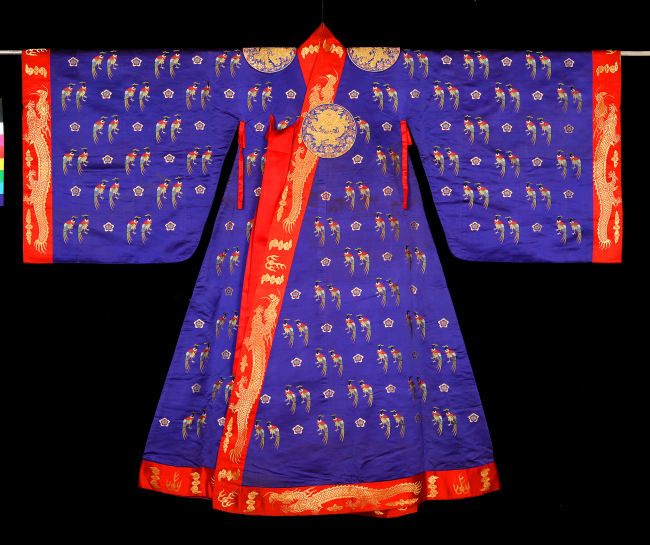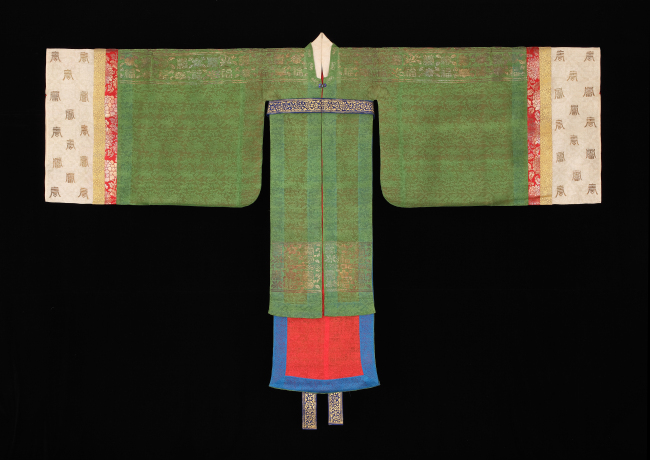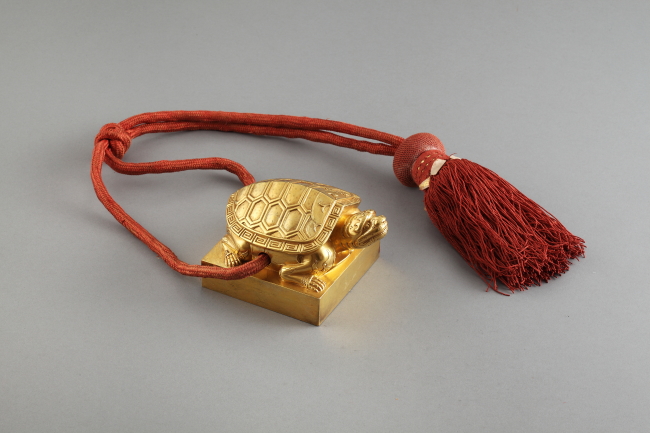 |
Wedding gown of Empress Consort Sunjeong, 1919 (Seojong University Museum) |
Stories of women at the royal court of the Joseon Dynasty (1392-1910) do not occupy major chapters in the 518 years of history for the monarchy. Rather than being major players, queens and concubines are often seen as symbols of jealousy or, sometimes, victims of political strife.
Despite little attention paid to their individual lives, these women shaped the sophisticated and splendid royal culture of Joseon that people of today appreciate, more even than the policies implemented by their husbands and sons or the changes in power they led.
The lives of queens and concubines of Joseon are back in the spotlight at a current exhibition being held at the National Palace Museum of Korea.
 |
Ceremonial robe of Consort of Imperial Prince Ui, early 20th century (National Palace Museum of Korea) |
Becoming queen was not an easy task, but hard-earned and rigorous. The nomination process involved three strict stages that teenage girls from noble families selected across the country had to pass to first become the crown princess.
When the process to choose a crown princess was announced, all teenage girls from noble families were forbidden to marry during the listing period. Each province had to submit a list of young women of noble families with both living parents. A total of 30 candidates were selected from the list, who then faced three strict steps before having the chance to be named the final crown princess.
The one selected was called to live in a separate royal residence immediately. She encountered a pile of books and, perhaps, a female teacher in order to learn the royal customs and manners before she officially wed a prince. She was also promoted to a position paralleling that of the king before the wedding.
On her wedding day, the crown prince would visit her residence to take her to the palace where she would spend the rest of her life. At the palace, a grand wedding ceremony awaited the young queen. The long, wide-sleeved wedding gown in blue and red represented the luxury and splendor of a royal wedding. The extravagant gown had pheasant patterns in five colors, each representing virtues a queen must hold.
Giving a successor for the monarchy was the most important task that the new queen faced, as fecundity was directly related to the stability and prosperity of a monarchy.
 |
Gold seal of Empress Suneui that marks her coronation (National Palace Museum of Korea) |
Giving birth was done according to royal guidelines and customs. Preparation for a newborn began three months prior for queens and a month before for concubines. Pregnancy guide books helped them through the stages of pregnancy. After giving birth, a series of procedures awaited, including burying the baby’s placenta in the ground.
Queens also routinely led the seasonal ritual of making cloth from silkworms, a way to encourage silk farming nationwide.
Surprisingly, queens and concubines had private financial assets and the right to manage them. These came from taxes paid to the individual palace property they were given. A palace complex consisted of separate houses where members of royal families lived and worked.
The exhibition runs until Aug. 30 at the National Palace Museum of Korea in Gyeongbokgung Palace. For more information, visit
www.gogung.go.kr.
By Lee Woo-young (
wylee@heraldcorp.com)










![[Today’s K-pop] Blackpink’s Jennie, Lisa invited to Coachella as solo acts](http://res.heraldm.com/phpwas/restmb_idxmake.php?idx=644&simg=/content/image/2024/11/21/20241121050099_0.jpg)